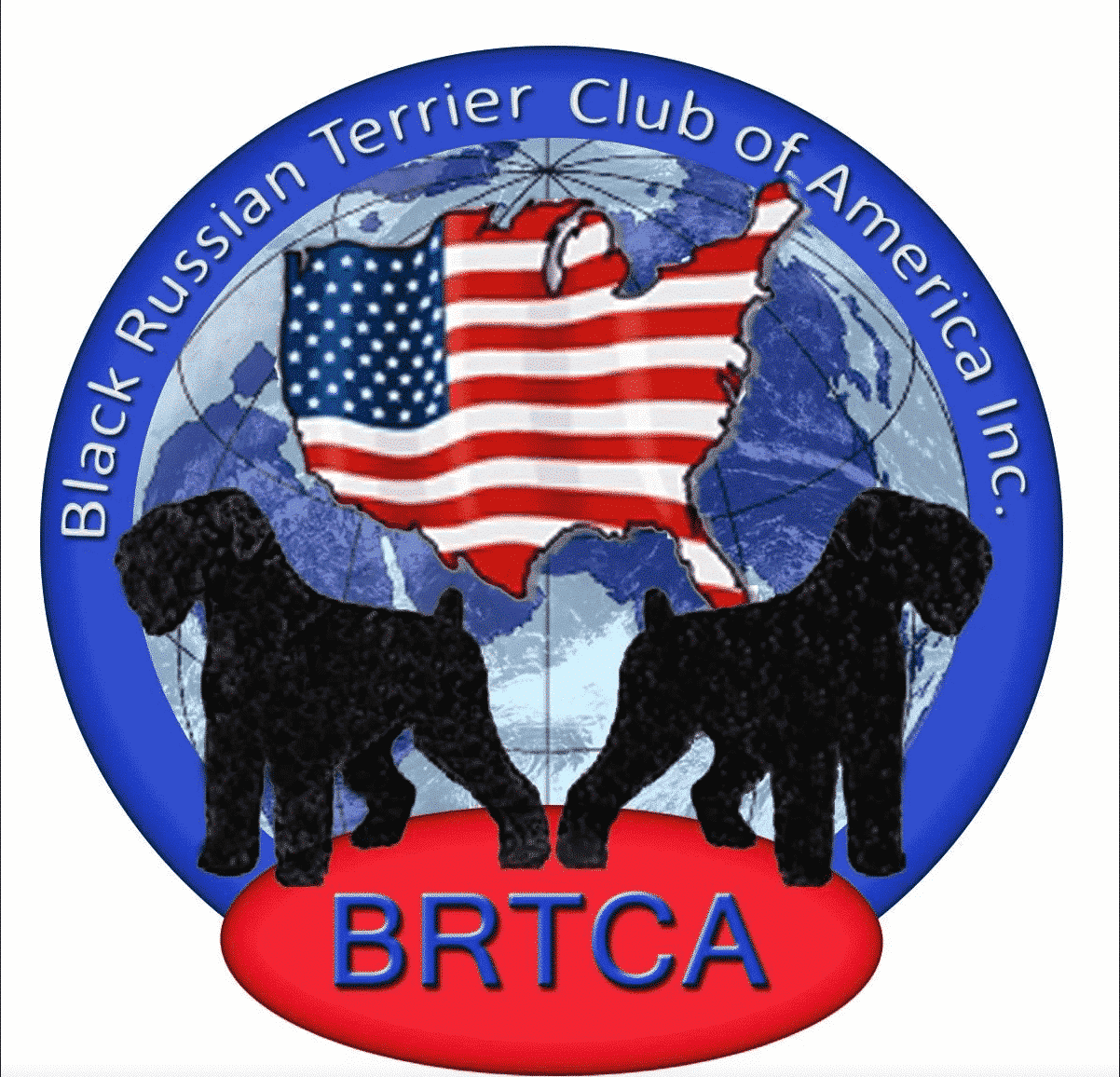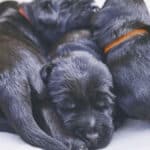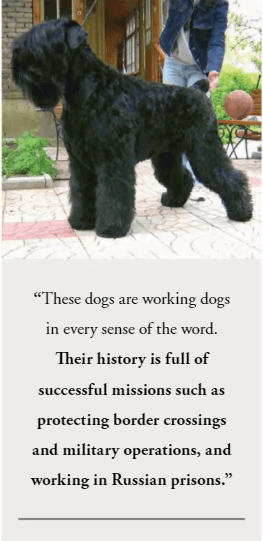 Over the years, there seems to be a growing confusion about the appropriate size and coat type of the Black Russian Terrier. With the many variations being seen today, and with an unclear understanding of the coat, it is understandable why there is ongoing confusion. Our hope is to clarify and give guidance to judges and fanciers alike. For a look at the complete Illustrated Standard, please go to the Black Russian Terrier Club of America website and purchase the Black Russian Terrier Illustrated Study of the Standard today!
Over the years, there seems to be a growing confusion about the appropriate size and coat type of the Black Russian Terrier. With the many variations being seen today, and with an unclear understanding of the coat, it is understandable why there is ongoing confusion. Our hope is to clarify and give guidance to judges and fanciers alike. For a look at the complete Illustrated Standard, please go to the Black Russian Terrier Club of America website and purchase the Black Russian Terrier Illustrated Study of the Standard today!
To understand the Black Russian Terrier and the appropriate size and coat type, we must first understand what he was bred to do. The Red Star Kennel of Russia aimed to develop a large, brave, strong, and manageable working dog with pronounced guarding instincts. These dogs are working dogs in every sense of the word. Their history is full of successful missions such as protecting border crossings and military operations, and working in Russian prisons. The Black Russian Terrier, in essence, has combined all of the best qualities found in his forefathers—the strength and power from the Rottweiler; the energy and work ethic of the Giant Schnauzer; the kind, gentle nature and reserve of the Newfoundland; and the fun-loving, intelligent, and tenacious disposition of the Airedale.
According to the AKC breed standard, mature male Black Russian Terriers are to be between 27-30 inches in height, with the desired height between 27 and 29 inches, and mature females are to be between 26-29 inches in height, with the desired height between 26 and 28 inches. Maturity is defined as being over the age of 18 months. (The FCI standard, which is very similar to the AKC standard, states for males 28-30 inches, no less than 27 inches and no greater than 30.5 inches; and for bitches 26.5 inches and 28.5 inches, and no less than 26 inches and not more than 29 inches.) Both the AKC and FCI standards express that height should not exceed 30 inches as this is a serious fault. However, here is where it gets tricky for those learning about the breed. Also stated in the AKC standard and the FCI standard is that: “Height consideration should not outweigh that of type, proportion, movement and other functional attributes. General balance is more important than absolute size.” (AKC) and “Slightly taller specimens are tolerated providing they are proportionate and of excellent breed type.” (FCI)
So what does this mean, you might ask? What the standards are saying is that while there is a desired height, a dog outside the maximum height could still be considered, provided he has maintained correct type, proportion, movement, and other functional attributes. An oversized dog may lack substance, rib spring, and shoulder angle, which result in improper structure and movement. The larger dog, though massive and impressive while standing in line, must also possess correct structure to enable correct movement. Remember, this is a working dog. He has purpose! Think of form following function. Endurance and sound working ability come from a balanced, well-proportioned dog. The moderate dog within the desired height and with balanced proportions will be able to do this job far longer and with greater ease than an oversized dog. A crucial piece to take away from the standard when thinking of size is; the desired height-to-length ratio is 9.5 to 10 and, as per the standard: “The chest is oval shaped, deep and wide with well-sprung ribs. The bottom line of the chest extends to the elbows or below and is not less than 50 percent of the dog’s height measured from the withers.”
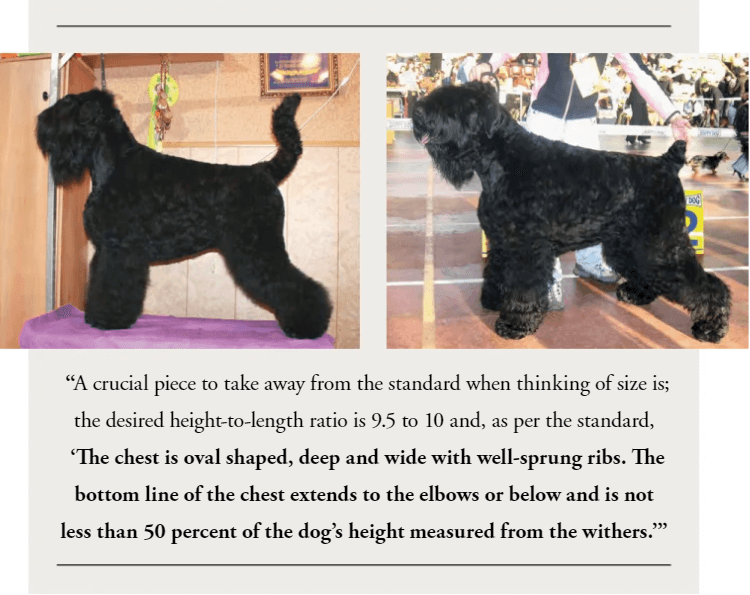
I have asked Laura Manis, a well-respected member of the BRT community and an accomplished groomer, to describe the Black Russian Terrier coat and proper show grooming. Laura has groomed many of the top dogs in the country over the 18 years that she has been in the breed. This is what she had to say:
“The BRT has a double coat with outer guard hair that is coarser than the softer undercoat; it is not wiry or curly. The body coat is slightly to moderately wavy. The furnishings on the head fall over the eyes, and the mustache and beard fall on the muzzle. The legs are covered and protected by a long, dense coat.
The size and coat type ? The coat color is black or black with scattered gray hairs. Older dogs may have graying on their beards and ears. The gray hairs may also be coarser in texture; this is permissible. The guard hair is often scissored-off in grooming. During examination, the coat quality and texture can be checked by feeling the coat texture on the leg furnishings. For presentation in the ring, the BRT coat should be trimmed so that the dog’s outline is clearly defined.
The grooming guide was developed in Russia. The length of the coat may vary depending on its location on the dog. The fall and muzzle furnishings may be longer than six inches in length. The shaving of the neck and rear emphasizes the compact shape of the body as well as the width of substance of the hindquarter. The head is rectangular, brick-like in appearance, and the top of the head is shaved to accentuate the parallel plane of the head and the moderate width of the skull. The ears are shaved and should be medium in size and triangular in shape. The legs are trimmed to resemble columns. A heavy coat can present a beautiful picture in a stack, while its illusion can hide an underdeveloped chest, undersized frame or a multitude of structural faults.”
In summary, grooming is not to be “given more weight than structure, movement, and balance…”
It is important to remember that the Black Russian Terrier has height ranges for good reason. Size without proper balance, proportion, and substance should not be rewarded. Too small a dog may lack breed type and too large a dog may lack proper structure, balance, and movement. When thinking of the Black Russian Terrier, remember the overall appearance; correct height, substance, musculature and, ever important, balance.
What’s the Appropriate Size and Coat Type of Black Russian Terrier ?
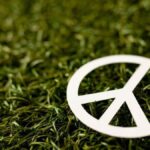

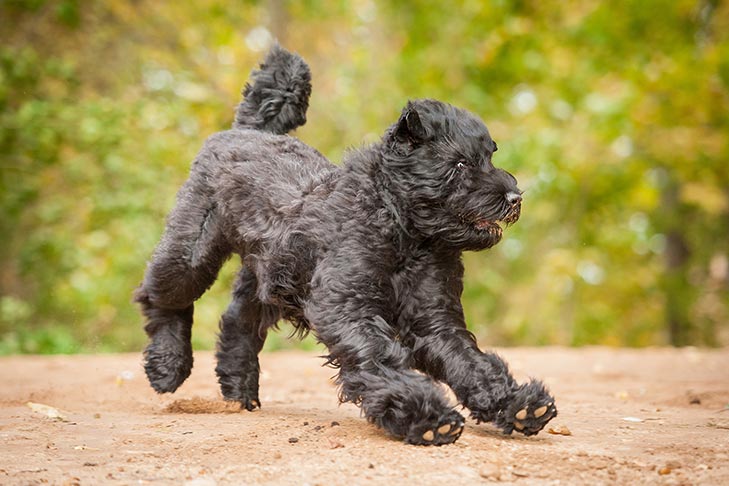
 Over the years, there seems to be a growing confusion about the appropriate
Over the years, there seems to be a growing confusion about the appropriate 
